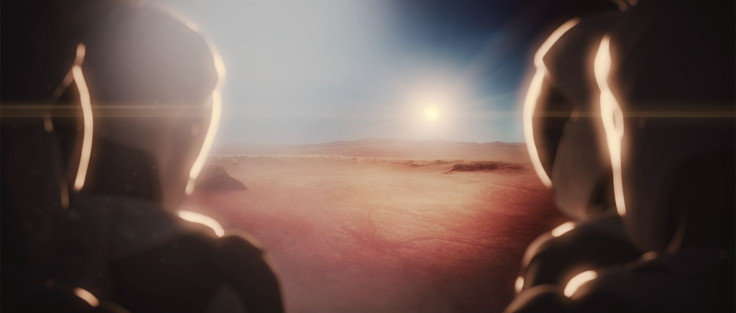Elon Musk Reddit AMA: SpaceX CEO Offers More Details Of Mars Colonization Plans

At the International Astronautical Congress last month, SpaceX CEO Elon Musk CEO outlined his ambitious plan to send humans to Mars and to establish a permanent colony on the red planet. During a Reddit AMA Sunday, Musk sketched out a few more details about his Mars colonization plans, including topics that weren’t touched upon during the September conference.
When asked about the habitats astronauts on Mars would live in, Musk said that initially, they would live in geodesic domes made using glass panels supported by carbon fiber panes.
“Plus a lot of miner/tunneling droids. ... You can build out a huge amount of pressurized space for industrial operations and leave the glass domes for green living space,” he wrote.
However, questions about how effective these structures would be in protecting inhabitants against deadly radiation remained unanswered.
Musk also shed further light on his company’s timeline for Mars exploration and colonization. Under its current plan, SpaceX would send its Red Dragon uncrewed scouting missions — possibly sometime between 2018 and 2020 — “to make sure we know how to land without adding a crater.” Then, the Interplanetary Transport System (ITS) rocket, provisionally named “Heart of Gold” as a tribute to the ship in Douglas Adams’ “Hitchhiker’s Guide to the Galaxy,” will fly to Mars loaded only with equipment to build a propellant plant on Mars — a key component of the plan. This would be followed by a crewed mission, which would ferry astronauts who would build a rudimentary base and complete the propellant plant.
Musk added he would “try to double the number of flights with each Earth-Mars orbital rendezvous, which is every 26 months, until the city can grow by itself.”
The SpaceX CEO also fielded and answered several questions about the architecture of its ITS boosters and rockets. The rocket would be powerful enough to travel back to Earth even when its relative position to Mars is not optimum, he said. This feature would ensure that astronauts can return to Earth immediately in case of an emergency, rather than having to wait for the once-in-26-months window.
“I think the F9 boosters could be used almost indefinitely, so long as there is scheduled maintenance and careful inspections. Falcon 9 Block 5 — the final version in the series — is the one that has the most performance and is designed for easy reuse, so it just makes sense to focus on that long term and retire the earlier versions. Block 5 starts production in about 3 months and initial flight is in 6 to 8 months, so there isn't much point in ground testing Block 3 or 4 much beyond a few reflights,” Musk said.
The “biggest” issue right now, according to Musk, is finding a way to seal the carbon fiber tanks in the ITS booster. He added that early tests had shown it could, “in theory,” hold a cryogenic propellant — such as liquid oxygen, which is one of the two fuels SpaceX envisions would power its Mars missions — without leaking.
First development tank for Mars ship pic.twitter.com/dF5tZkldUb
— SpaceX (@SpaceX) September 27, 2016
“The oxygen tank also has an oxidation risk problem as it is pressurized with pure, hot oxygen. Will almost certainly need to apply an inert layer of some kind. Hopefully, something that can be sprayed,” Musk said.
© Copyright IBTimes 2024. All rights reserved.



















